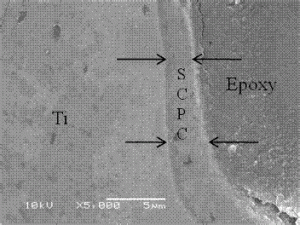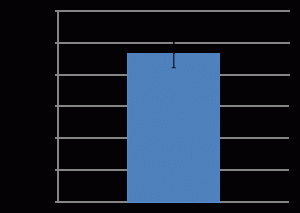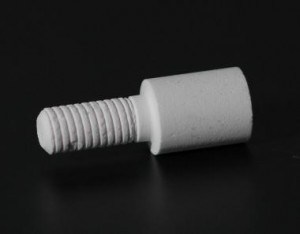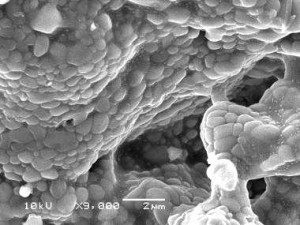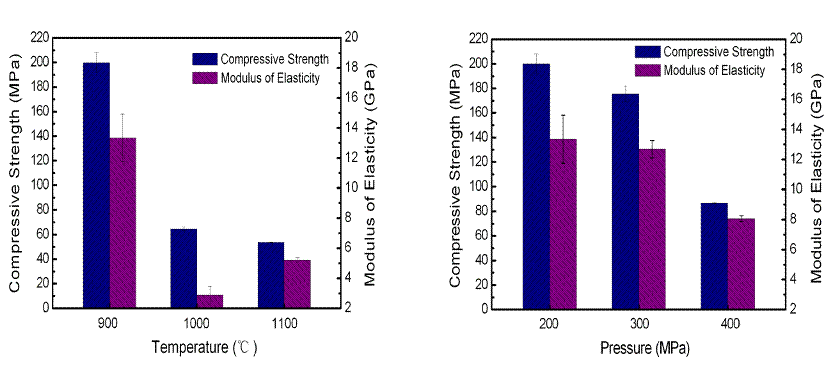Coating of Metallic Implants with SCPC Bioactive Ceramic
Coating orthopedic implants with bioactive ceramics has the potential to improve material-tissue integration and provide better fixation of the device. SCPC has been coated on Ti-6Al-4V as well as Co-Cr alloys using electrophoretic deposition (EPD) technique.
SEM image of SCPC coating on Ti-6Al-4V foam vertebral implant. (left) SCPC nano-particles uniformly coated the outer surface as wel as the entire thickness of the porous implant. (right)Cross-section analysis showed that SCPC coating forms a uniform coating thickness 3-5 mm (arrow) over the inner surfaces of the Ti alloy foam disc.
Tensile testing to determine adhesion strength at SCPC-Ti alloy interface showed adhesion strengths of 47 + 4MPa. The ASTM standards for the adhesion strength is 30 MPa.
Development of bioactive fixation devices
Current orthopedic fixation devices are mainly made of metals such as stainless steel or titanium alloy. Metal implants have the drawbacks of eliciting immunological responses and stress sheilding.� Silica-Calcium Phosphate nano-Composite (SCPC) is a bioactive ceramic that bonds to bone and enhance bone tissue formation. SCPC can be tailored for a range of mechanical properties comparable to cortical and trabecular bone. A unique application of the SCPC implant is to manufacture orthopedic fixation devices such as screws.
Preliminary results showed that SCPC is machinable and can be used for fabrication of various orthopedic screws. SCPC particles 45-150 mm were compacted into cylinders using powder metallurgy technique. The cylinders were thermally treated at 800 C in air, cooled to room temperature and then machined using turning and threading techniques on a manual lathe (left image). SEM analysis (right) of the microstructure of SCPC screw showed that SCPC particles were coated with a bioactive glassy phase.
The Mechanical Properties of SCPC can be engineered using processing parameters such as thermal treatment and compact pressure.

Porous SCPC has demonstrated mechanical behavior comparable to that of trabecular bone upon compression loading.
The figures below show the effect of processing parameters on the strength and modulus of elasticity of SCPC. Under all processing conditions, SCPC maintained mechanical properties within the range of cortical bone.
Preservation of stem cells in resorbable bioactive scaffolds
The bioactive and resorbable nature of porous Silica Calcium Phosphate nano-Composite (SCPC) allowed the use of the material as a vehicle for stem cell preservation and delivery. SCPC-stem cell hybrid can provide an unlimited supply of readily available engineered bone tissue. Bone marrow mesenchymal stem cells loaded on porous SCPC scaffolds and cryo-preserved over liquid nitrogen were able to resume normal functionality of differentiated bone-forming cells (osteoblasts). The SCPC-stem cell hybrid can substitute autograft and allow rapid bone tissue growth in large bone defects, decrease surgery time, eliminate the need for a second surgery by virtue of the resorbability of the material.
Thermal history of cryopreserved SCPC stem cell scaffold.


